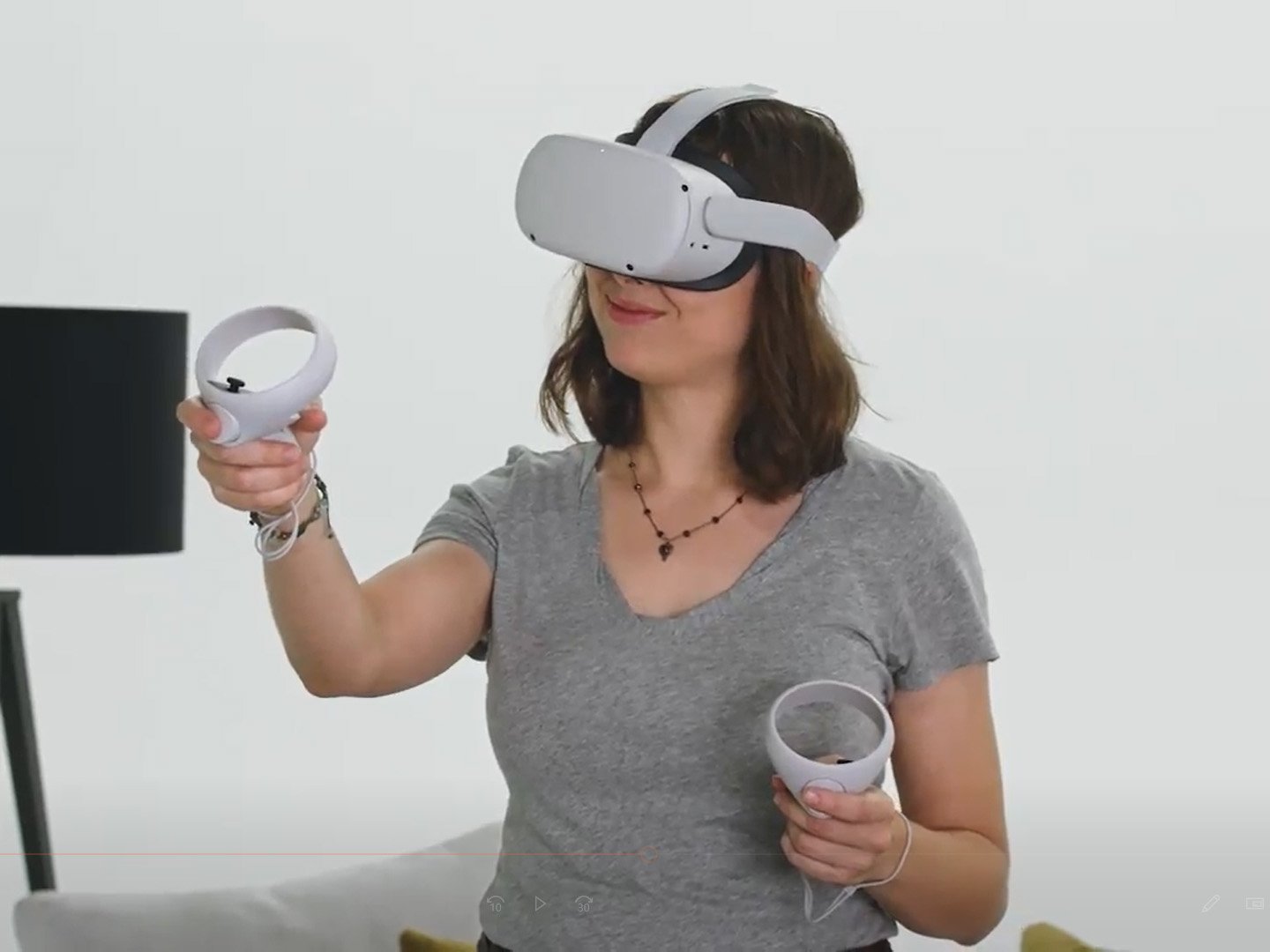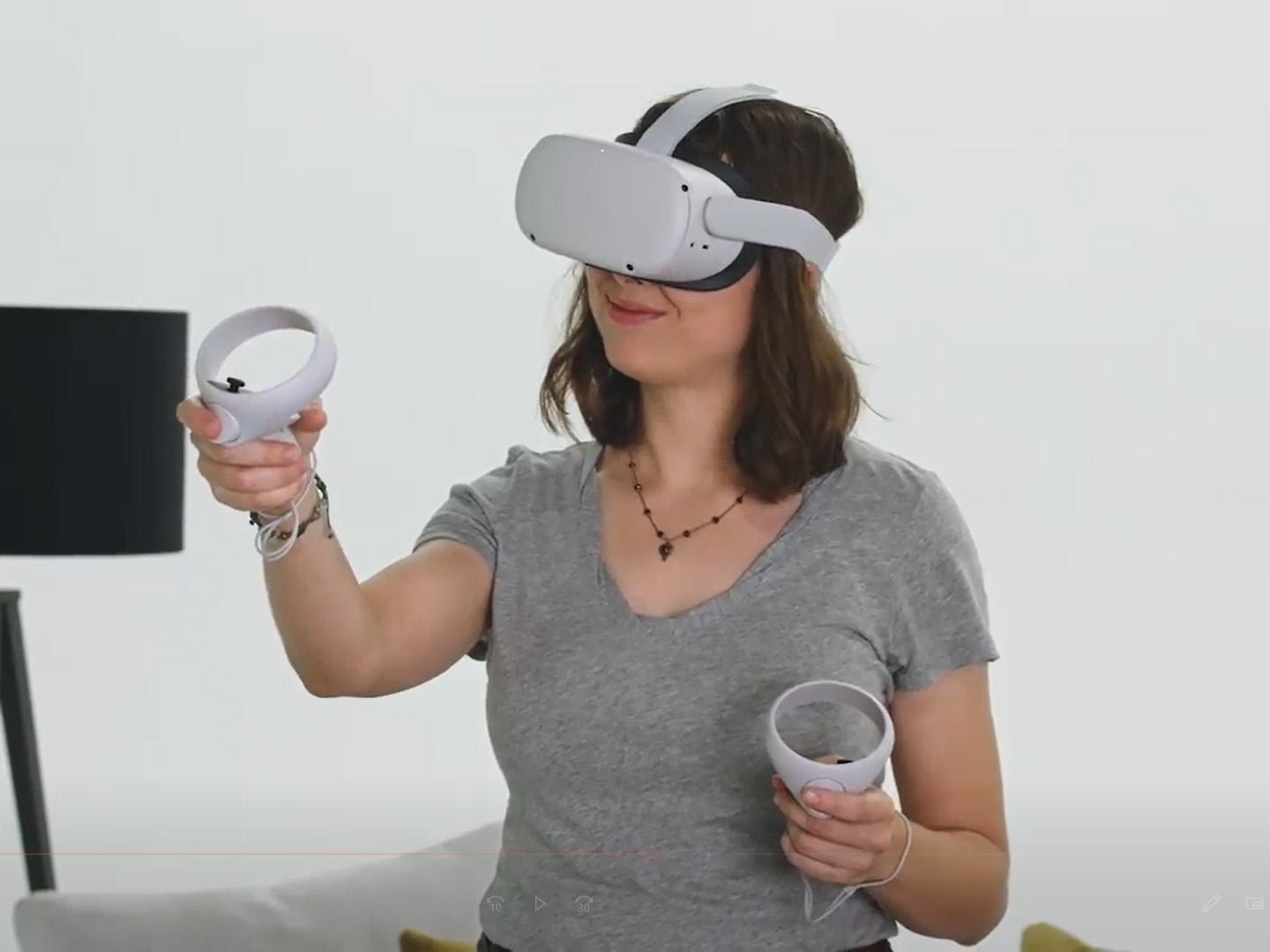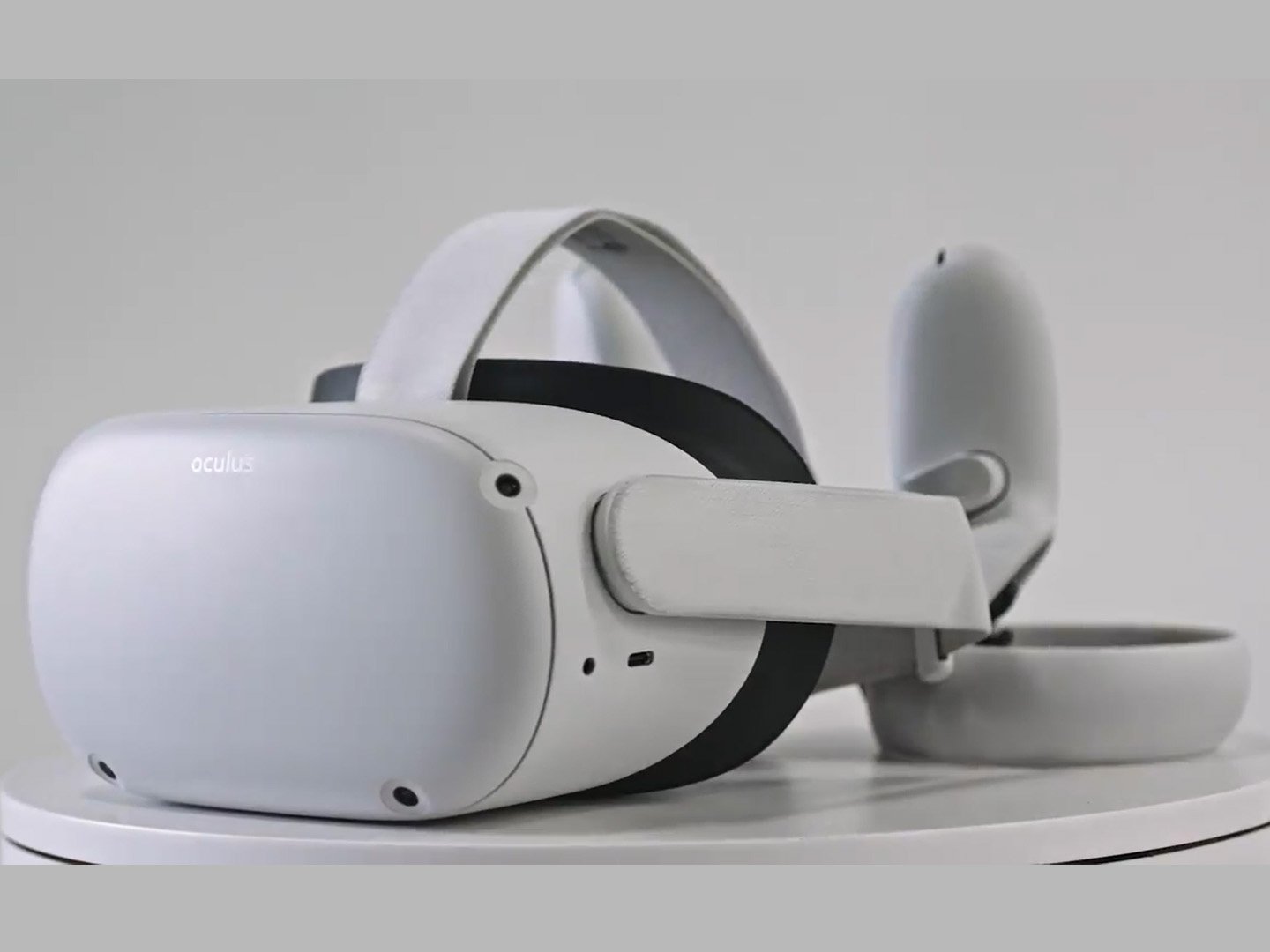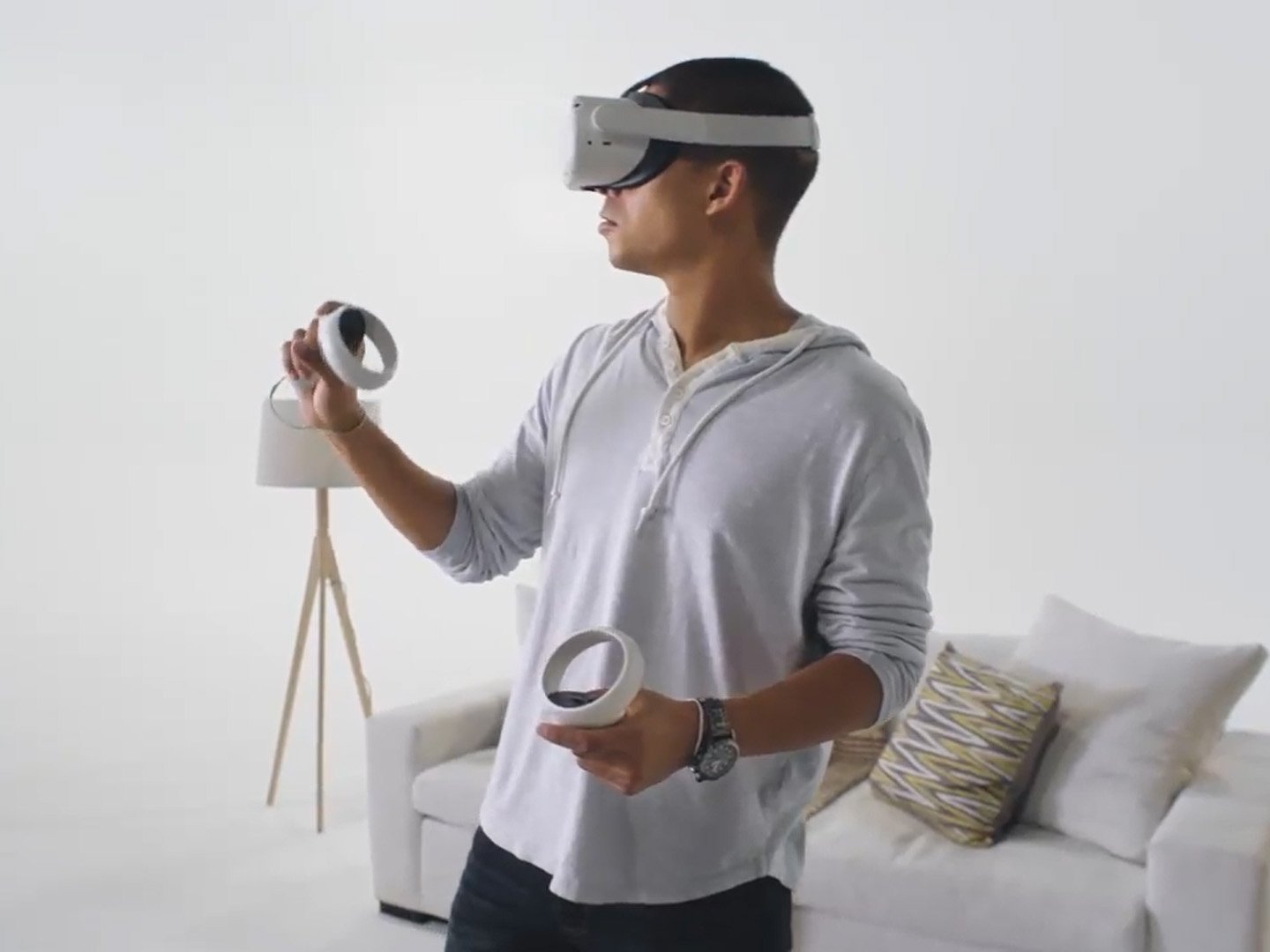Oculus Quest 2: What resolution is the display?


Oculus Quest 2: What resolution is the display?
More pixels for the Oculus Quest 2
Leaked promotional videos from Facebook have specifically stated that the Oculus Quest 2 features a display with 50% more pixels than the one found on the Oculus Quest. These leaked videos describe the display as having "almost 2K" resolution per eye, which totals "almost 4K" resolution.
While the specific resolution of the Oculus Quest 2's display is not yet known, the 50% jump in pixels could come from several possible areas of improvement. First off is a raw resolution increase, which has been stated to be just under 2K resolution. Doing some simple math based on Facebook's statement of 50% more pixels, it's possible that the Oculus Quest 2 could have a display with 1920 x 1680 resolution per eye. That makes it roughly 50% more pixels while keeping the original aspect ratio. We'll have to wait for the official announcement to be completely sure, though.
A diamond PenTile or RGB Stripe display for the Oculus Quest 2?

The other possible area of improvement is in the pixel structure. The original Oculus Quest utilized a PenTile OLED display with 1440 × 1600 resolution per eye. With a PenTile display, each pixel is made up of sub-pixels that are arranged in a diamond shape. When placing these pixels next to each other, there's a natural gap between pixels because diamonds don't fit perfectly together. RGB Stripe displays use a simple vertical row of sub-pixels to create a single pixel, which can be placed side-by-side in a much tighter configuration, leaving smaller gaps between pixels.
If Facebook is utilizing an RGB stripe display on the Oculus Quest 2, as they did on the Oculus Rift S, it would mean an automatic increase in clarity. That's because our eyes would no longer see the space between the pixels and interpret that as a much higher-resolution display. While this change doesn't increase the pixel count itself, it makes the display crisper by placing pixels closer to each other. To our eyes, pixels that are closer to one another look almost identical to simply adding additional pixels.
What type of display for the Oculus Quest 2?
At this time, we do not know what type of display the Oculus Quest 2 uses. That being said, we can surmise what Facebook will use in the Oculus Quest 2 based on industry trends and Facebook's own headsets.
The original Oculus Quest utilized an OLED display, which is known for its deep colors, perfect black levels, and super low latency response times. This past year, Oculus and several other manufacturers switched from PenTile OLED panels to fast-switching LCD panels, a new type of display technology developed for VR headsets.
While fast-switching LCD panels don't feature deep colors or perfect blacks like an OLED display, they do feature ultra-fast response times and are generally more pixel-dense. That means that, even at the same number resolution, a fast-switching LCD display would look much sharper than a PenTile OLED display would.
Get the Windows Central Newsletter
All the latest news, reviews, and guides for Windows and Xbox diehards.
What's the refresh rate of the display on the Oculus Quest 2?

We don't know the refresh rate of the Oculus Quest 2's display at this time. Based on what we know about the rest of the Oculus Quest 2's hardware, we can draw some conclusions. The original Oculus Quest utilized a 72Hz refresh rate for the display and used a Qualcomm Snapdragon 835 chipset for processing. The Oculus Quest 2 utilizes a Qualcomm Snapdragon XR2 chipset, which is a custom AR/VR chipset built upon the significantly more powerful Snapdragon 865 platform.
Since the Snapdragon XR2 inside the Oculus Quest 2 supports up to 3K resolution at 90 Hz per eye, we can assume that Oculus will be shooting for the highest refresh rate possible. A higher refresh rate doesn't just mean smoother action in VR, it also means fewer people will suffer from motion sickness while playing. Facebook has been angling the Oculus Quest line of products as the solution for gamers looking for an easy, quality VR experience. It makes sense for them, then, to choose specs that best fit this goal. An increased refresh rate fits within in that paradigm.
Nick started with DOS and NES and uses those fond memories of floppy disks and cartridges to fuel his opinions on modern tech. Whether it's VR, smart home gadgets, or something else that beeps and boops, he's been writing about it since 2011. Reach him on Twitter or Instagram @Gwanatu

